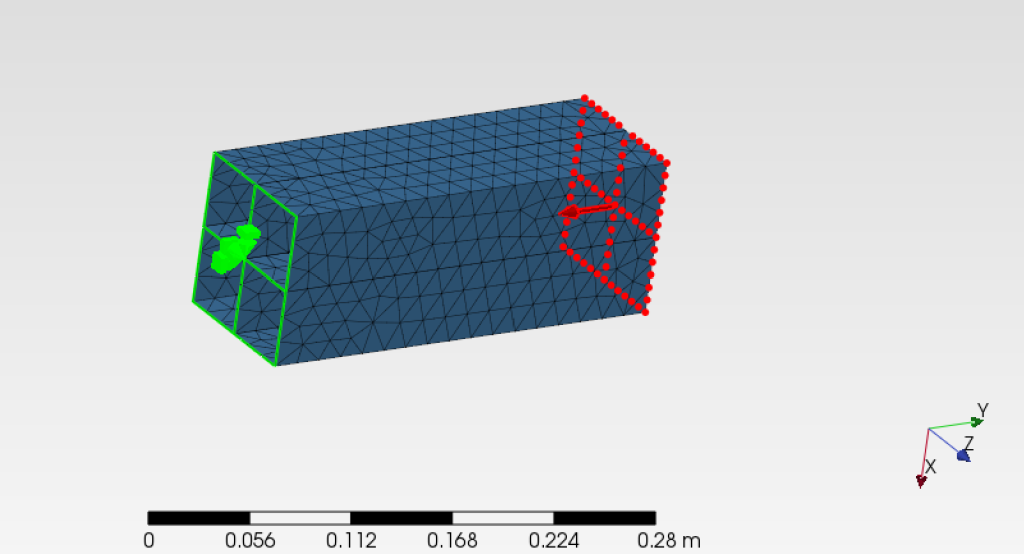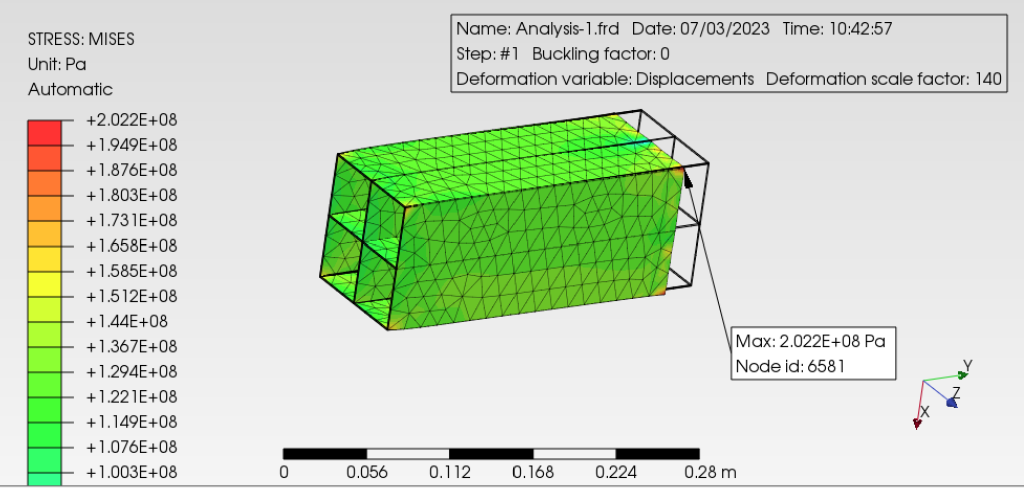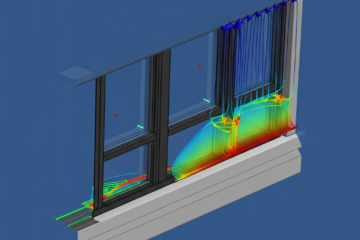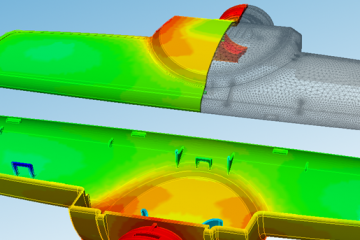FEM analysis type
FEM analysis are possible on the cloudHPC thanks to several software among which Code_Aster and Calculix. When performing these analysis, it is important to keep in mind the possibilities of study the user can. In fact FEM analysis can highly differenciate as they can regard static study, modal analysis, buckling calculation, fatigue, etc. They all can be applied to the very same geometry configuration, so there is no need to modify the mesh most of the times or the element type, but they are highlighting a specific behaviour of the mechanical element analized.
In this case a simple beam with two internal reinforcements is taken into consideration with shell elements. The analysis are going to be performed using Calculix and the cloudHPC allowed to run them all in parallel simultaneously. The configuration is rather simple:
- In green on one side of the beam a fixed constrained is applied
- In red, on the opposite side of the beam, a compression load is applied

The first FEM analysis type is a static analysis: the above configuration is applied and the goal of the simulation is reporting the deformed shape of the beam under the external load and the evaluation of its internal stresses in Pa or MPa.

The second FEM analysis type is the modal analysis. In this analysis actually only the constraint are playing a role and the goal is the evaluation of the vibration modes of the structure. These vibrations depends only on the structure itself and on the constraint applied to it. It is possible to compare the frequency obtained against some frequency of the load applied to the structure in order to avoid resonances.

Finally a third FEM analysis type is the buckling. This analysis aims at giving the structure instabilities when constraint and loads are applied. The structure in fact, due to the presence of minimum disturbs, can undergo an instability process that generates wrinkles which, eventually, can lead to a failure in resistance to a static load. The result of this analysis is the buckling deformed shape and a buckling factor which is the coefficient to apply the load to trigger this instability.

CloudHPC is a HPC provider to run engineering simulations on the cloud. CloudHPC provides from 1 to 224 vCPUs for each process in several configuration of HPC infrastructure - both multi-thread and multi-core. Current software ranges includes several CAE, CFD, FEA, FEM software among which OpenFOAM, FDS, Blender and several others.
New users benefit of a FREE trial of 300 vCPU/Hours to be used on the platform in order to test the platform, all each features and verify if it is suitable for their needs




0 Comments